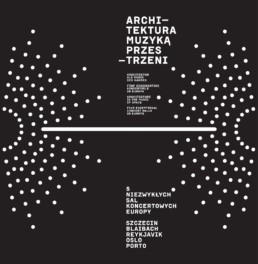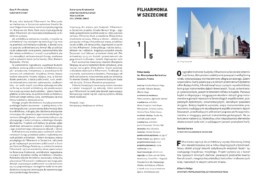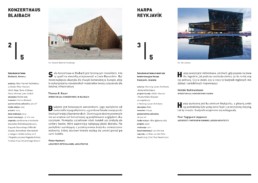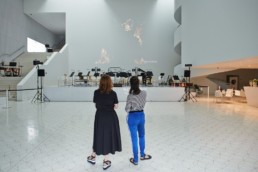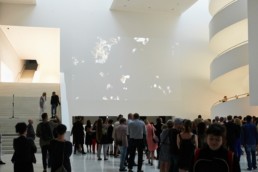As If Nothing Could Fall except the Sun
installation
part of the exhibition Architecture is the Music of Space. Five Exceptional Concert Halls in Europe
curator: Ewa P. Porębska
The Mieczysław Karłowicz Philharmonic Hall in Szczecin, 23 June‒10 September 2016
instalments in: Blaibach, Reykjavik, Oslo and Porto, under preparation
“As If Nothing Could Fall except the Sun” is the first composition of series Architecture is the Music of Space. The alarm concert dedicated to the Sun.
The installation was produced for an exhibition exploring the influence of architecture on music, translatability and untranslatability of the two sensual experiences, and a transcendence of their forms on the example of five, contemporarily erected concert calls (Szczecin, Blaibach, Reykjavik, Oslo, Porto).
“As If Nothing Could Fall except the Sun” was composed of a video projected at the central point of the hall, representing a golden plate in a state of physical change and its afterglows, and a musical composition resonating throughout the entire building, as performed by its permanently fixed evacuation system (the composition has also become a permanent fixture of a repertoire of sounds available in the system). The piece was made up of technical sounds of the philharmonic, e.g., sounds of intermissions between pieces, action withheld by certain instruments in concert performances, suspended playing on instruments, breaths, air flows. Their selection and juxtaposition reveal, for example, the shape and size of the very building, submit the eponymous Sun and particular elements of the architecture to relationships, e.g.: a temperature of the musical motif of sunrise is correlated with an ascension rhythm of the staircase leading to the concert room in the hall. Further, the artist recorded a 23-second-long album, containing 8 short pieces, and three of those have been chosen in an internet poll to be used as concert announcing ring-tones.
An immediate inspiration has come from the building, whose minimalist form sets it within the tradition of a neo-Gothic architecture of its street: with a white exterior, general-access, light-filled space, and the concert hall itself: laid in gold, where individual plates, making up the entire decoration, were assembled by hand. The dazzling structure and its afterglows, provoked by reflected sunlight, and the gold space, giving off an impression of heat, with an extremely arresting wall texture, achieved thanks to the golden plates, fifteen by fifteen centimetres large, led the artist, usually working at the meeting ground of conceptualism and sensualism, to a decidedly sensual treatment of this invitation. The resultant composition has been dedicated to the Sun, while an enlightenment and changes in state of matter caused by operation of heated air are its leading motifs.
The installation was produced for an exhibition exploring the influence of architecture on music, translatability and untranslatability of the two sensual experiences, and a transcendence of their forms on the example of five, contemporarily erected concert calls (Szczecin, Blaibach, Reykjavik, Oslo, Porto). The piece was made in response to an invitation from the Szczecin Philharmonic on the occasion of an architectural award (European Union Prize for Contemporary Architecture – Mies van der Rohe Award) for its new seat designed by Estudio Barozzi Veiga.
